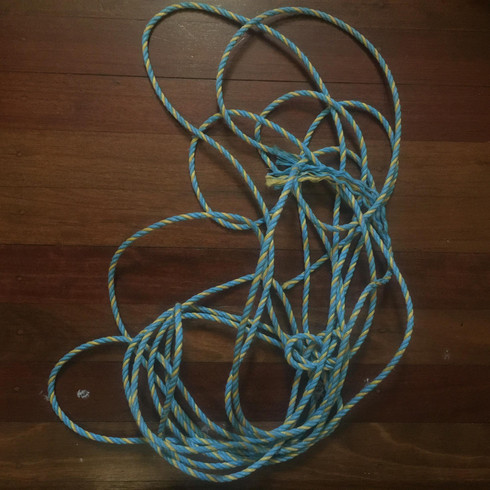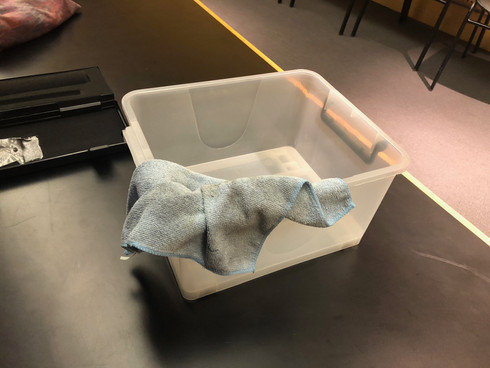Carrie Sound Replacement Project: Recording the Sounds
- Roseta Cork
- Jul 11, 2018
- 4 min read

In this update, I'll be talking through our process of some of the sounds we recorded for our sound replacement project. It's been such a fun process and we were surprised to get such realistic sounds from the recordings. We just finished recording all of the sounds that we needed on Monday, which has lifted a lot off of our shoulders and now we are collecting samples online of sounds that we couldn't record. We only need a small amount of samples but it's been difficult trying to find the right sample to suit the scene. Other than that, we are on our way to mixing our whole project to hand in by the end of the week which we're all stoked about. I also created a scratch track that'll play for the whole scene and which is what my next blog post will be about so keep an eye out. Anyway, let's get to it.
One of the first sounds we recorded were fire sounds, which we planned to record using a bunch of cassette tapes, bubble wrap as well as blowing into the mic, recording each of them separately. After doing multiple takes of each sounds, we layered them and to our surprise, it sounded like real fire! The cassette tape rustling and the bubble wrap helped define the fire's high end and the crackling while the blowing gave it that really large whoosh windy sound along with covering the low frequencies that fires produce. We couldn't believe we got such good results in such a small amount of time as we thought it would be one of the sounds that would've taken us ages to master and if we didn't we were going to use samples instead. We recorded electrical sparks after with the bubble wrap again; popping the bubbles to emulate short electric spark shots.
Another sound we recorded that we got interesting results from were rope sounds. We first used a rope I brought from home, which was quite thin so we were a tad doubtful that we weren't going to get the sound that we needed. A few takes were recorded, the sounds we recorded just wasn't what we were looking for. After a few minutes, I leant back into my chair and it unintentionally made this sort of creaky noise, that sounded just like a rope being stretched. We then immediately took the chair into the foley room to be recorded and got some great results from it.
Recording the screams had to be one of the funnest sessions, as we always ended up laughing afterwards, and it was great having different people come in the studio. We aimed to get a range of different screams from males to friends to represent the crowd in the scene. A friend of ours in our class, James, was the first to record some screams for us and he did a great job in performing the screams and it felt like he was in the scene. We also managed to get one of our lecturers in and he also did such a great performance, but we also weren't surprised as he worked with games and would've no doubt had to work with ADR and foley. We also had a student from games and a film graduate come in to record and they also did a great job in emulating the crowd in the scene. When layering them together with the fire sounds, they all sounded haunting and really made the scene come to life so we were really happy with the results.
Recording the blood sounds was one of the recordings that took a while to get, as we needed a lot of layers and different kinds of sounds such as the triplets, the large splash and recording them on different surfaces. From some research, a lot of blogs talked about using different materials for blood sounds but we ended up using water instead, which then we would pitch down later to create a thicker sound. The water droplets were recorded by rinsing a cloth and letting the water drip into a bucket, and the large splashes were recorded by pouring a water from a glass bottle into a bucket; some sounds recorded quicker and some were just a slow pour. At the end of the day we were happy with the sounds collected and lowering the pitch for the sounds really helped to capture the thickness of the blood in the scene.
These were some of the sounds that were recorded for our sound replacement. I could talk about each and every sound but it would take me about 2-3 blogs to write and I'm really not going to do that. Like I said before, we really had a fun time recording what we could and learnt a lot of things on the way and got some great results at the end. Recording foley has made me appreciate sound design a whole lot more and makes me realise how creative you'd need to get to achieve the closest sound possible to the scene.
Keep an eye out for my next blog post on how I made the scratch track for the whole scene!














![AUM162: Week 13 [Last Week]](https://static.wixstatic.com/media/4a0380_fffcdfb375bc4edda118f2cc64d311eb~mv2.jpg/v1/fill/w_447,h_250,fp_0.50_0.50,q_30,blur_30,enc_avif,quality_auto/4a0380_fffcdfb375bc4edda118f2cc64d311eb~mv2.webp)
![AUM162: Week 13 [Last Week]](https://static.wixstatic.com/media/4a0380_fffcdfb375bc4edda118f2cc64d311eb~mv2.jpg/v1/fill/w_220,h_123,fp_0.50_0.50,q_90,enc_avif,quality_auto/4a0380_fffcdfb375bc4edda118f2cc64d311eb~mv2.webp)

















![AUM162: Week 13 [Last Week]](https://static.wixstatic.com/media/4a0380_fffcdfb375bc4edda118f2cc64d311eb~mv2.jpg/v1/fill/w_306,h_250,fp_0.50_0.50,q_30,blur_30,enc_avif,quality_auto/4a0380_fffcdfb375bc4edda118f2cc64d311eb~mv2.webp)
![AUM162: Week 13 [Last Week]](https://static.wixstatic.com/media/4a0380_fffcdfb375bc4edda118f2cc64d311eb~mv2.jpg/v1/fill/w_44,h_36,fp_0.50_0.50,q_90,enc_avif,quality_auto/4a0380_fffcdfb375bc4edda118f2cc64d311eb~mv2.webp)








Comments